I'm very new to this, especially WinUI, so please bear with me.
I'm writing an UI app with Visual Studio which communicates with a console program through a JSON file with properties. The UI has two main sections and a setting page. The pages share parts of the properties which will have to be written to the JSON file. I think the NavigationView is perfect for my purpose. In any case, I want to avoid having everything in one window.
This is a new version of a Windows Forms app, which had very few controls and only a main window with menu elements.
- I tried to add a similar way by reading properties/variables from other pages.
- Using static objects works but is a lot of manual work to hook up with the controls.
- Similarly, such a solution requires a lot of manual work as well.
- Using two instances doesn't work as each instance seems to update separately.
- Since static objects work, I tried to bind controls to static properties.
- I couldn't find a proper guide for WinUI, so I tried to use something like this.
- Again, making instances in any form (xaml, code-behind) and update that, never seems to update the source property.
- I also tried to use non-static properties and make an instance of it on other pages, which to my biggest surprise didn't work either (Maybe I didn't do this correctly?).
- There are a number of Stackoverflow questions about this, most of them didn't work out for me (some details in things I tried).
- This MAUI answer recommends DependencyService, but it seems to be exclusive to Xamarin (and MAUI seems to be different as well).
- A number of solutions turned out to be exclusive for other app styles (forms, framework, etc). I wasn't able to translate any of these methods to my WinUI app. (Example)
- A popular way to use properties seems to be a MVVM.
- This works on the same page only. It looks like the instances do not update the source either.
- The previously mentioned solution with static objects didn't work either.
- I also tried the toolkit MVVM package, trying to copy what the Template Studio for WinUI does, but it was no different.
- There seems to be ways to share data between ViewModels and even pages (by using their class as models) with a Main ViewModel (link). I don't know how to do that and if it works.
- The Template Studio seems to be saving and reading from a file. However, I am concerned about performance since that would constantly read from and write to disk.
- The only implemented setting in the Template Studio (on only one page), the theme changer writes to yet another file which I must avoid. (I will have a UI settings file but it must be editable with a text editor.)
- Writing settings to disk would probably mean that I have to add a command for each control, so I can just as well use a method from 1.
- There seems to be a way to bind settings files (various formats like INI, XML, JSON), which I haven't checked out more closely, as I am concerned about performance.
- I saw some other suggestions, such as:
- DynamicMethod, which seems to have poor performance and doesn't seem to solve my issue.
- Dependency properties which seem to have poor performance as well (seems to be better now). I couldn't get this to work, probably because I couldn't find a good tutorial. It seems to be a promising solution, so if this is the recommended way, I can provide my non-working code.
Examples:
1. (static properties require a lot of manual assignment)
Page1 (xaml)
<ToggleSwitch x:Name="test" Header="test switch" OffContent="Off" OnContent="On" Toggled="test_Toggled"/>
Page1 code-behind (C#)
[...]
public static MyClass Test { get; set; }
[...]
private void test_Toggled(object sender, RoutedEventArgs e)
{
Test.TestSwitch = test.IsOn;
}
[...]
Page2 code-behind (C#)
using static Namespace.Page1;
[...]
TextBox.Text = Test.TestSwitch.ToString();
[...]
2. (couldn't figure out proper static binding and using non-static properties doesn't work for me)
Page1 (xaml)
<ToggleSwitch x:Name="test" Header="test switch" IsOn="{x:Bind Test.TestSwitch, Mode=TwoWay}" OffContent="Off" OnContent="On"/>
<TextBox x:Name="test2" Text="{x:Bind Test.TestSwitch, Mode=OneWay}"/> <!--works-->
Page1 code-behind (C#)
[...]
public MyClass Test { get; }
[...]
Page2 code-behind (C#)
[...]
Page1 P1 = new();
TextBox.Text = P1.Test.TestSwitch.ToString();
[...]
4. Find more examples including MVVM in this test app.
This is a general question about how to do this the right way. Did anyone share data in this context before?
*** Please excuse my amateur language.
